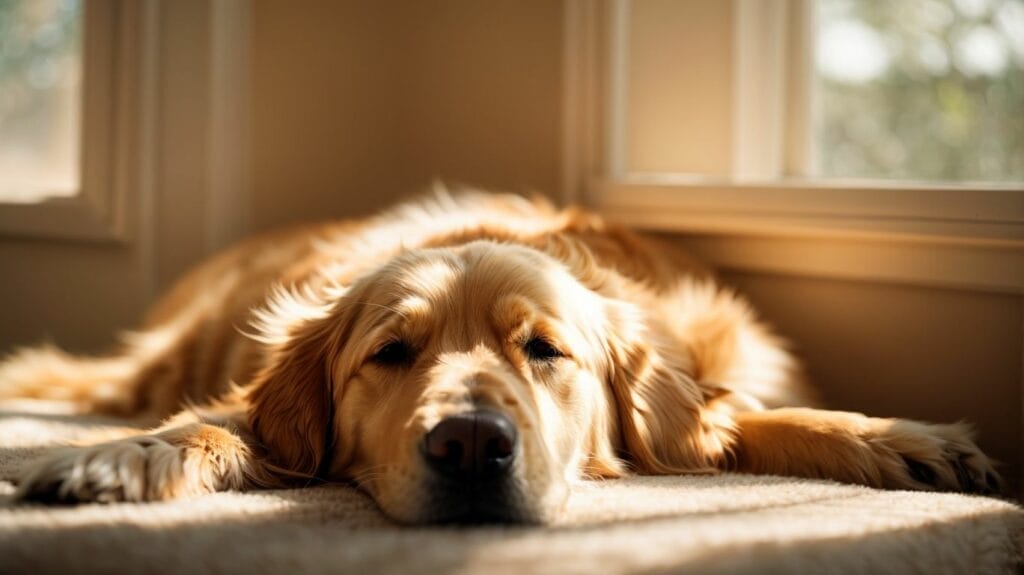Dogs are known for their love of sleep, often spending a significant portion of their day napping away. But why do dogs sleep so much? Understanding their sleep patterns and behavior can provide insights into this common canine trait. In this article, we will explore the reasons why dogs sleep more than humans, their sleep cycles, signs of abnormal sleep, factors affecting sleep quality, and how to determine if your dog is sleeping too much.
To begin, it is essential to understand what is considered normal sleep for dogs. Do they sleep more than humans? What factors influence their sleep duration? By answering these questions, we can gain a better understanding of their sleep patterns. We will delve into the reasons why dogs sleep more than humans, including ancestral traits, energy conservation, age, and overall health.
Next, we will explore the different stages of a dog’s sleep cycle. Like humans, dogs experience both REM (Rapid Eye Movement) and non-REM stages of sleep. Understanding these sleep cycles can shed light on their sleep behavior and patterns.
In addition to discussing normal sleep patterns, we will also look at signs of abnormal sleep in dogs. Excessive sleepiness and sleep disorders can indicate underlying issues that may require attention.
Furthermore, we will examine various factors that can affect a dog’s sleep quality. Noise, disturbances, environmental factors, and health conditions all play a role in determining how well a dog can rest.
Finally, we will address the important question of how much sleep is too much for a dog. By identifying excessive sleep and knowing when to consult a veterinarian, dog owners can ensure their furry companions’ overall well-being.
By the end of this article, readers will have a comprehensive understanding of why dogs sleep so much and the factors that contribute to their sleep patterns. So, let’s dive in and uncover the fascinating world of canine sleep!
Key takeaways:
- Dogs sleep more than humans: Dogs have a natural inclination to sleep more than humans due to their ancestral traits and energy conservation needs.
- Sleep is essential for dogs’ well-being: Dogs need adequate sleep for their physical and mental health, as it aids in energy restoration, memory consolidation, and overall well-being.
- Sleep patterns can indicate health issues: Excessive Sleepiness or abnormal sleep patterns in dogs may be signs of underlying health conditions that require veterinary attention.
What is Considered Normal Sleep for Dogs?
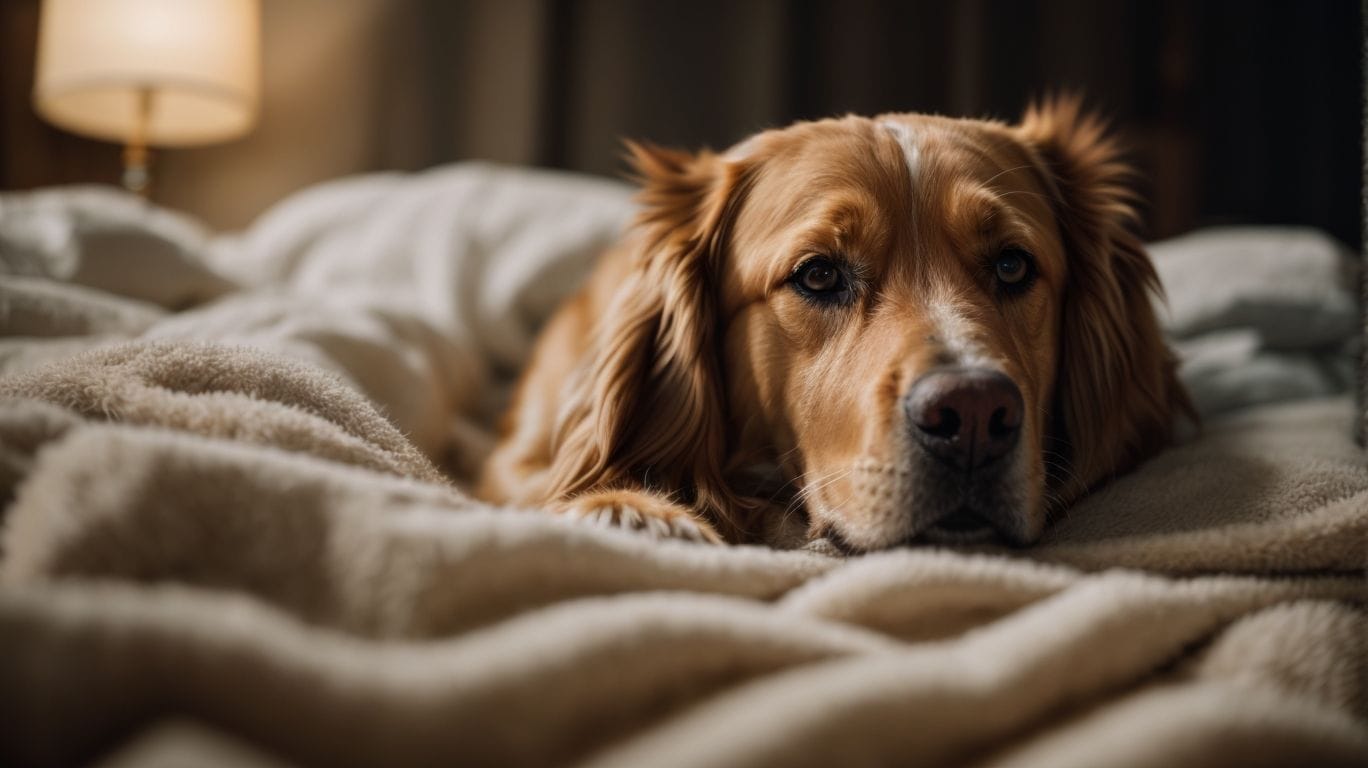
Photo Credits: Petnarnia.Com by Richard Roberts
When it comes to understanding what is considered normal sleep for dogs, it’s important to know that dogs sleep an average of 12-14 hours a day, with puppies and older dogs sleeping even more. The sleep duration can vary based on factors such as age, breed, and activity level. Dogs need to get enough sleep in order to maintain their physical and mental health. Lack of sleep can lead to behavioral issues and can affect their overall well-being. So, if your furry friend seems to be sleeping quite a bit, don’t worry; it’s perfectly normal!
According to Guinness World Records, the longest recorded sleep for a dog is held by a bloodhound named Snoring Snickers, who slept for a whopping 22 hours and 40 minutes in a single day! This record-breaking snooze fest happened in 2019 and astounded dog lovers worldwide. While not all dogs can achieve such sleep feats, it’s fascinating to see just how much rest our furry friends can enjoy when in dreamland.
Do Dogs Sleep More Than Humans?
Yes, dogs do sleep more than humans. Several factors contribute to dogs’ increased sleep duration. Dogs are natural sleepers, and ancestral traits influence their sleep patterns.
Do Dogs Sleep More Than Humans? Dogs sleep longer to conserve energy and restore their bodies. Age and developmental factors play a role, as puppies and senior dogs require more sleep than adult dogs. A dog’s sleep duration can be affected by their health and overall well-being. Understanding these factors can help pet owners recognize normal sleep patterns in their dogs and identify any signs of excessive sleep or sleep disorders.
What Factors Influence a Dog’s Sleep Duration?
What Factors Influence a Dog’s Sleep Duration?
Multiple factors, including age, health, exercise, and environment, influence a dog’s sleep duration. Puppies and older dogs generally require more sleep than adult dogs. In addition, health conditions such as pain or disease can also impact a dog’s sleep patterns. Regular exercise helps dogs expend energy, which in turn enhances the quality of their sleep. Furthermore, a quiet, comfortable, and familiar environment can contribute to longer sleep duration for dogs. By understanding these factors, pet owners can create a conducive sleep environment and identify any potential issues with their dog’s sleep patterns.
Why Do Dogs Sleep More Than Humans?

Photo Credits: Petnarnia.Com by Dennis Rivera
Dogs and humans both love their sleep, but have you ever wondered why dogs seem to sleep more than us? In this section, we’ll dig into the reasons behind our furry friends’ increased sleep needs. From ancestral traits that make them natural sleepers to the energy conservation and restoration benefits they gain from longer slumbers, we’ll uncover the factors that contribute to their extended nap times. Plus, we’ll explore how age, development, and overall health play a role in keeping our canine companions well-rested. Get ready for some fascinating insights into the world of doggie sleep habits!
Natural Sleepers: A Remnant from Ancestral Traits
Dogs are natural sleepers, a remnant of their ancestral traits. This innate behavior is evident in their ability to adapt and rest in different environments. Here are some reasons why dogs exhibit natural sleep patterns:
– Circadian Rhythms: Dogs possess biological clocks that regulate their sleep-wake cycles, enabling them to align their sleep patterns with the natural light and darkness.
– Energy Conservation: Dogs instinctively conserve energy through sleep, which helps them replenish and restore their physical and mental well-being.
– Evolutionary Instincts: Dogs have inherited the sleep patterns of their ancestors, who relied on sleep to stay alert and survive in the wild.
– Sensitive Senses: Dogs have highly sensitive senses, and sleep allows them to reset and recover from sensory overload.
An owner of a Labrador Retriever noted that after a long walk, the dog would curl up for a nap, demonstrating its natural ability to prioritize rest and recharge for future activities, just like its ancestors in the wild.
Energy Conservation and Restoration
Energy conservation and restoration are vital for a dog’s sleep patterns. These are the key factors associated with energy conservation and restoration in dogs:
- Physical activity: Regular exercise during waking hours enhances energy conservation in dogs while they sleep.
- Diet: A well-balanced and nutritious diet is essential for providing dogs with the required energy and aiding restoration during sleep.
- Sleep environment: Creating a comfortable and peaceful sleep environment promotes energy conservation and supports restoration for dogs.
- Sleep duration: Sufficient sleep allows dogs to replenish energy levels, repair tissues, and maintain overall well-being.
By prioritizing energy conservation and restoration, dog owners can ensure their pets have optimal sleep patterns, thereby promoting good health and vitality.
Age and Developmental Factors
Age and developmental factors play a crucial role in a dog’s sleep patterns.
The sleep patterns of dogs are influenced by both their age and developmental factors. These factors are essential in determining how much rest dogs require.
Puppies require more sleep than adult dogs, ranging from 15-20 hours per day. This extensive sleep aids in their growth and development.
In particular, puppies need a significant amount of sleep to support their growth and development. They typically sleep between 15-20 hours per day.
As dogs mature, their sleep patterns gradually shift to match that of adult dogs, which is typically around 10-12 hours per day.
As dogs grow older, their sleep patterns naturally change. They begin to sleep for around 10-12 hours per day, similar to adult dogs.
Aging dogs may experience changes in their sleep patterns due to factors such as health issues or discomfort.
When dogs enter their senior years, they may encounter alterations in their sleep patterns. Various factors, including health problems or discomfort, can contribute to these changes.
Understanding these age-related sleep differences can help pet owners provide their dogs with the appropriate amount of rest they need to thrive.
Recognizing and comprehending these age-related sleep differences allows pet owners to ensure that their dogs receive the necessary amount of sleep to flourish.
Fun Fact: Just like humans, dogs experience REM sleep, which is associated with dreaming and cognitive development.
Interestingly, dogs, like humans, also undergo REM sleep, a stage connected to dreaming and cognitive development.
Health and Well-being
Ensuring the health and well-being of your dog is important for their overall sleep quality. Here are factors to consider:
- Regular Exercise: Engaging in physical activity helps dogs burn off excess energy, promoting better sleep.
- Diet: A balanced diet supports your dog’s overall health, which can impact their sleep patterns.
- Stress Reduction: Reducing stress through a calm environment and positive reinforcement techniques can improve sleep quality.
- Mental Stimulation: Providing mental stimulation with toys and puzzles helps prevent boredom and promotes better sleep.
- Comfortable Sleep Space: Providing a cozy and comfortable sleep area can contribute to your dog’s health and well-being and encourage restful sleep.
- Regular Veterinary Check-ups: Regular check-ups ensure that any health issues are addressed promptly, which can improve sleep quality.
Understanding Dog Sleep Cycles
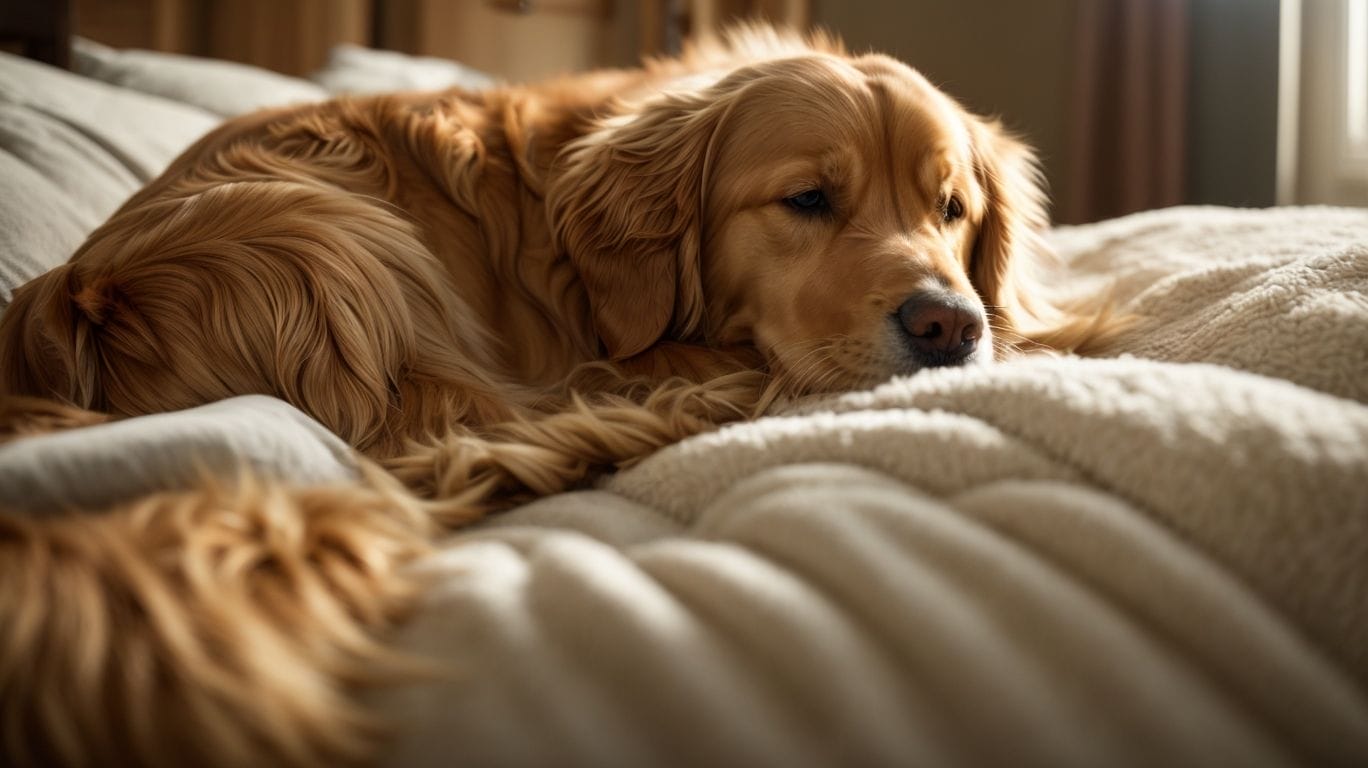
Photo Credits: Petnarnia.Com by Jonathan Clark
We have ever wondered why our furry friends sleep away for hours on end. In this section, we dive into the fascinating world of dog sleep cycles. Get ready to uncover the secrets behind their slumber as we explore the REM stage and the various phases of non-REM sleep. From dreaming tales to restorative rest, get ready to understand why dogs can’t resist a good snooze!
The REM Stage
The REM Stage is an important part of a dog’s sleep cycle. During this stage, which stands for Rapid Eye Movement, dogs experience active brain activity and vivid dreaming. The REM Stage is characterized by rapid eye movement, muscle relaxation, increased heart rate, and irregular breathing. It is during this stage that dogs may exhibit twitches, leg movements, and even vocalizations. An average dog spends about 10-12% of their total sleep time in the REM Stage. Understanding the REM Stage helps us better comprehend the different sleep patterns and behaviors exhibited by our canine companions.
To ensure your dog gets enough quality sleep, provide a comfortable and quiet sleeping environment, establish a regular sleep schedule, and engage in regular exercise and mental stimulation during the day.
The Non-REM Sleep Stages
During the Non-REM Sleep Stages, dogs experience different stages that contribute to their overall sleep quality. The non-REM sleep stages consist of:
| 1. Stage 1: | This is a transitional stage between wakefulness and sleep. Dogs may appear tired and may still be responsive to external stimuli. |
| 2. Stage 2: | In this stage, the dog’s heart rate and body temperature decrease, and brain activity slows down. |
| 3. Stage 3: | Also known as slow-wave sleep, this stage is crucial for physical restoration and growth. Dogs in this stage are difficult to wake up and may show minimal response to their surroundings. |
Understanding the non-REM sleep stages helps us recognize normal sleep patterns and identify any abnormalities in a dog’s sleep.
Fun fact: Dogs spend around 75% of their sleep time in the non-REM sleep stages, allowing for essential rest and recovery.
Signs of Abnormal Sleep in Dogs
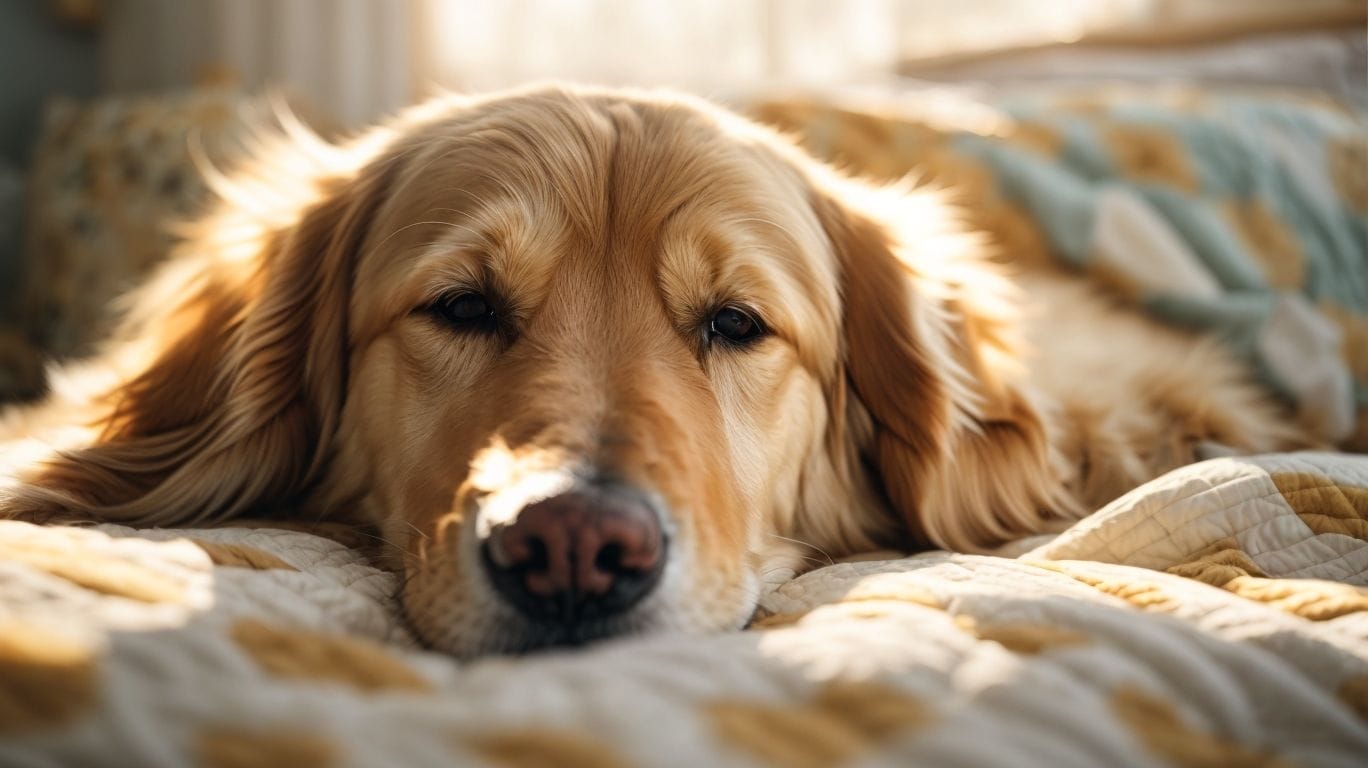
Photo Credits: Petnarnia.Com by Tyler Baker
Does your furry friend seem to sleep all day and night? In this section, we’ll explore the signs of abnormal sleep in dogs and what they could indicate. From excessive Sleepiness to potential sleep disorders, we’ll uncover the reasons behind your dog’s unusual sleep patterns. So, grab a coffee, and let’s dive into the fascinating world of canine sleep!
Excessive Sleepiness
Excessive Sleepiness in dogs can be a cause for concern and should be addressed. Excessive Sleepiness may indicate underlying health issues or sleep disorders. Signs of excessive Sleepiness include prolonged periods of sleeping, difficulty waking up, and sedentary behavior. Environmental factors such as noise and disturbances can also disrupt a dog’s sleep, leading to excessive Sleepiness. Suppose you notice your dog sleeping excessively or showing signs of abnormal sleep patterns. In that case, it is important to consult a veterinarian to rule out any underlying medical conditions and ensure your dog’s overall well-being.
Sleep Disorders in Dogs
Sleep disorders in dogs can have a significant impact on their overall health and well-being. It is not uncommon for dogs to experience sleep disorders such as insomnia, sleep apnea, and narcolepsy. Insomnia refers to difficulty falling asleep or staying asleep, while sleep apnea causes pauses in breathing during sleep. Additionally, narcolepsy is a neurological disorder that can result in excessive daytime sleepiness and sudden sleep attacks. A variety of factors, including underlying medical conditions, stress, or genetic predispositions, may trigger these sleep disorders. Suppose you observe any unusual sleep patterns or behaviors in your dog. In that case, it is crucial to seek the advice of a veterinarian in order to obtain an accurate diagnosis and appropriate treatment.
Factors Affecting Dog Sleep Quality
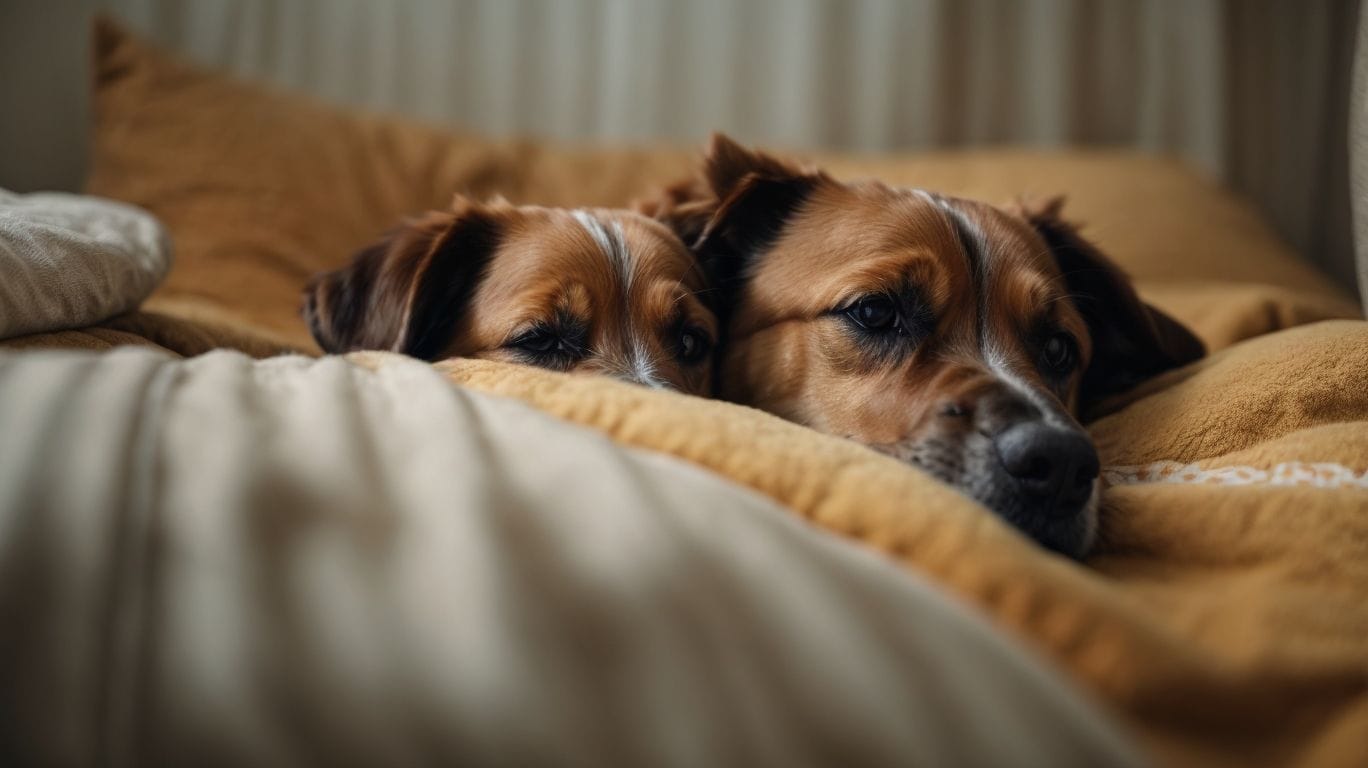
Photo Credits: Petnarnia.Com by Larry Clark
Dogs and sleep, we all know they go hand in paw. But have you ever wondered what factors can affect the quality of their slumber? Buckle up as we dig into the world of doggy dreams in this section. From pesky noises and disturbances that disrupt their sleep to the impact of environmental factors on their snooze sessions and even the potential health conditions that can influence their rest, we’ll uncover the secrets behind your furry friend’s sleep quality.
Noises and Disturbances
Noise and disturbances can have a significant impact on a dog’s sleep quality. Dogs, being sensitive to noise, can easily be disturbed by loud sounds like fireworks, thunderstorms, or construction noises. These disruptions can lead to trouble falling asleep or staying asleep for dogs, resulting in fragmented sleep patterns. To ensure dogs can get the restorative sleep they need, it is crucial to create a calm and quiet sleeping environment. Providing a comfortable and secure space, employing soundproofing techniques, or utilizing white noise machines can effectively minimize noises and disturbances and promote better sleep for dogs.
Environmental Factors
Environmental factors can have a significant impact on the sleep quality of a dog. These factors encompass various elements such as noise, temperature, lighting, comfort, and air quality.
Noise, such as loud sounds or constant disturbances, can disrupt a dog’s sleep patterns, leading to restlessness or interrupted sleep. Similarly, extreme temperatures, whether excessively hot or cold, can make it challenging for dogs to sleep comfortably.
Additionally, lighting plays a crucial role in the natural sleep-wake cycle of dogs. Bright lights or excessive darkness can interfere with their sleep quality.
Furthermore, the comfort of the sleeping environment is essential for dogs to relax and obtain proper rest. If the sleeping area is uncomfortable or unfamiliar, it can pose challenges for them to achieve restful sleep.
Lastly, air quality also impacts a dog’s sleep. Poor air circulation or exposure to irritants can result in respiratory discomfort, which ultimately makes it harder for dogs to attain sound sleep.
Overall, paying attention to these environmental factors and creating a conducive sleep environment for dogs is vital to ensuring their sleep quality.
Health Conditions
Health conditions can significantly impact a dog’s sleep patterns. Certain illnesses or underlying medical conditions can disrupt a dog’s sleep, resulting in excessive Sleepiness or difficulty in staying asleep. Common health conditions that can interfere with a dog’s sleep include pain, arthritis, respiratory problems, gastrointestinal issues, and neurological disorders. Monitoring a dog’s sleep habits is crucial for pet owners, and if they observe any noticeable changes or abnormalities, it is important to consult a veterinarian. Proper diagnosis and treatment of these health conditions can enhance the quality of a dog’s sleep and overall well-being.
How Much Sleep is Too Much?
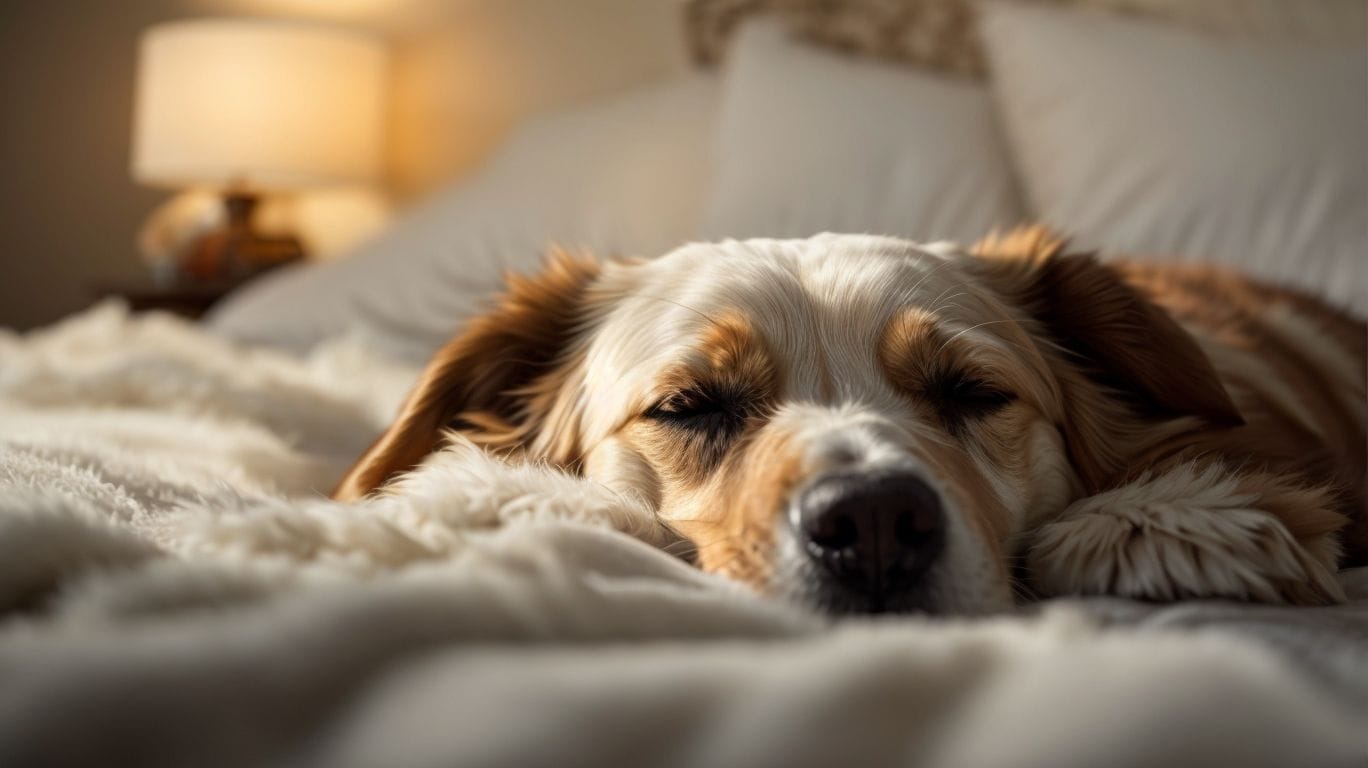
Photo Credits: Petnarnia.Com by Gary Hernandez
Curious about your furry friend’s snooze-a-thon? Let’s dive into the fascinating world of doggy slumber and explore the sub-sections that focus on identifying excessive sleep in dogs. From wagging tails to droopy eyelids, we’ll uncover the signs that separate sweet dreams from a potential cause for concern. So, grab a cozy blanket and prepare to unravel the mystery of just how much sleep is too much for our beloved canines.
Identifying Excessive Sleep in Dogs
Identifying Excessive Sleep in Dogs is a crucial aspect of ensuring the overall health and well-being of these animals. It is important to be observant of certain signs to watch out for:
- One sign is increased Sleepiness, where a dog sleeps noticeably more than usual and appears tired or lethargic even during their waking hours. This heightened Sleepiness could be an indication of excessive sleep in dogs.
- Another factor to consider is the possibility of sleep disorders in dogs, such as insomnia or sleep apnea. If you happen to notice unusual sleep patterns or behaviors like excessive snoring or restless sleep, it is recommended that you consult a veterinarian for proper guidance.
By closely monitoring their sleep habits and staying alert to any changes, it becomes easier to identify signs of excessive sleep in dogs and take appropriate veterinary care when necessary.
Some Facts About Why Do Dogs Sleep So Much:
- ✅ Dogs sleep around 10 to 14 hours in 24 hours, but some may sleep as much as 20 hours. (Source: Our Team)
- ✅ Excessive sleeping may be a result of aging or disease, so it’s important to monitor your dog’s sleep cycle. (Source: Our Team)
- ✅ Dogs sleep more when they are relaxed and have no motivation to be active. (Source: Our Team)
- ✅ Factors that affect how much a dog sleeps include age, weight, health, and breed. (Source: Our Team)
- ✅ Excessive sleep can be a sign of a health problem, so it’s important to consult a veterinarian if you’re concerned. (Source: Our Team)
